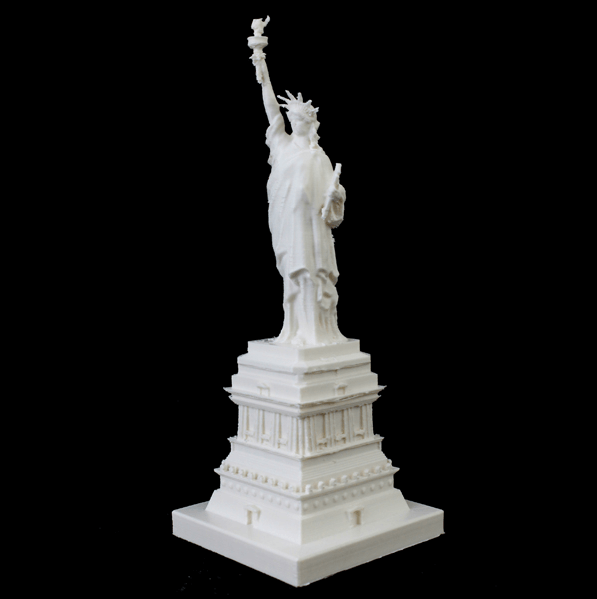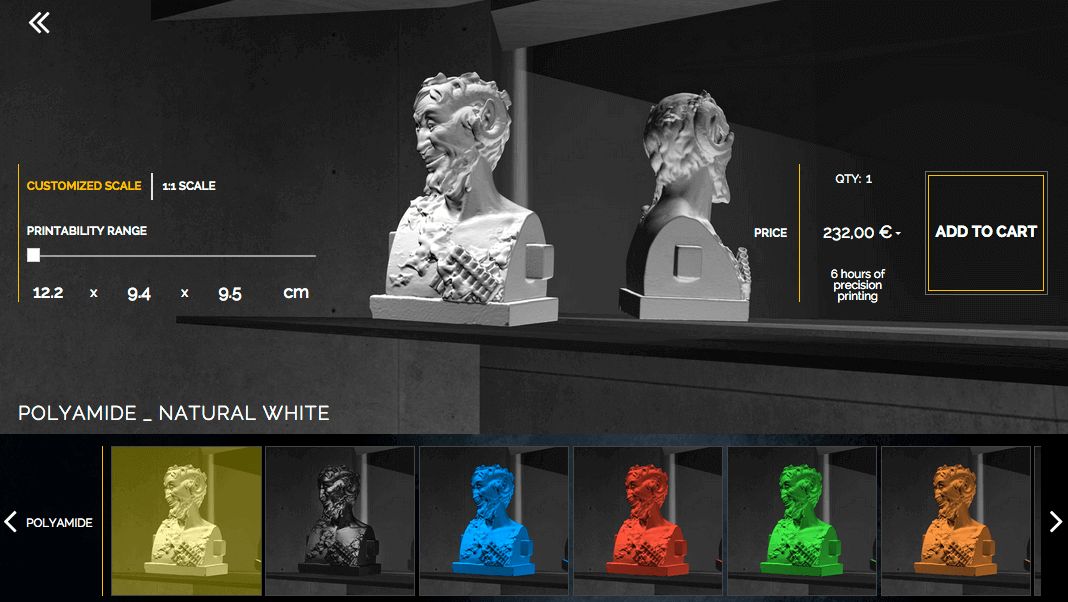What you should know: 3D printing art can preserve precious pieces, ranging from rare paintings to destroyed artifacts.
There are many different ways for 3D printing to make artistic expression and cultural heritages more accessible. Like allowing the visually impaired to experience artistic shapes through the touch. Another is by giving artists new means of expressing their creativity. The third, which concerns us all, is by making art universally and eternally available by letting us 3D print replicas of priceless masterpieces anywhere in the world, whenever we want, from a digital 3D file.
This possibility is the one that holds the most promise both from a decorative and – perhaps even more importantly – educational standpoint. Modern 3D technologies will let us reproduce in different materials and sizes, and even personalize, some of the most significant images from our history, surrounding us with new interpretations of masterpieces from our cultural past. At the same time, we will be able to preserve these shapes as digital files and share them with educational institutions throughout the globe just with the touch of a few buttons (download and print).
History, teleported

Several companies and institutions have been taking a serious interest in 3D printing of art and cultural artifacts. However, any process of preserving, sharing and using 3D printed art necessarily begins with 3D scanning. Although 3D scans have been around for as long as 3D printers and have reached high level of proficiency even earlier, the technologies remain expensive and the process time-consuming. Taking a perfect 3D scan is currently the number one limitation to accurately reproducing art.
The first to seriously tackle the objective of making its collection more open and available is the Smithsonian, the famous museum institution in North America. In collaboration with 3D software giant Autodesk, the Smithsonian launched the X 3D project with the goal of 3D scanning 10% of its enormous archive of 13.6 million artifacts. Currently, only 1% of the items in the Smithsonian’s collection are exhibited. So X3D would truly be a huge revolution by letting scientists, students and users everywhere not only visualize but “teleport” art pieces from the museum’s storage rooms to their desktops or fablabs. However the process is more complex than initially thought, as over the past year and a half, only about a dozen artifacts have been digitalized and made public.
Making History

The one foundation that more than any other has already been making use of 3D printing to create and recreate masterpieces that are true works of art is the Spanish-Italian Factum Arte. Through extensive experience and know-how, the Factum Arte team has been able to recreate some of the most priceless treasures from human cultural heritage, including the entire site of Tutankhamon’s Tomb, perhaps its most impressive project.
Formed by leading experts in art and technology of the highest level, the company seeks to replicate and preserve, through several different 3D scanning and 3D printing technologies, some of the most important works of art and cultural heritage. Factum Arte’s skills are such that the company was able to “replicate” even the works that have never existed. The project The Arts of Piranesi, in fact, used drawing by the Italian artist to create some beautiful artistic furniture and vases that were never built.
Formed by leading experts in art and technology of the highest level, the company seeks to replicate and preserve, through several different 3D scanning and 3D printing technologies, some of the most important works of art and cultural heritage. Factum Arte’s skills are such that the company was able to “replicate” even the works that have never existed. The project The Arts of Piranesi, in fact, used drawing by the Italian artist to create some beautiful artistic furniture and vases that were never built.
Art Napster

These are both amazing projects for education and preservation of art, other projects seek to make art more easily available to everyone; even if they are not involved with academic or cultural institutions. However, they follow two very different approaches.
One is Scan the World, a project by MyMiniFactory, which is the “creative” arm of the iMakr chain of 3D print shops. Through Scan the World users anywhere 3D scan famous public monuments, using any mean in their possession and upload the 3D printable file to a special section of the MyMiniFactory online database of curated 3D printable models. There already are a few hundred models and several hundred more are on the way.
This was made possible by the wide availability of new 3D scanning systems which let users (with enough patience and skills) create a 3D scan using just a smartphone App or a set of photographs. Although there are shady areas, copyright regulations allow anyone to 3D scan any monument that is more than 70 years old. The downside is that the models are not high resolution and high quality, a bit like a song downloaded from Napster a the beginning of the MP3 era.
Art iTunes

The other option wants to be more like the “iTunes of 3D printable art content”. It is called Artficial and it is a platform that lets you either order custom replicas of privately owned artistic masterpieces or stream the 3D printable file directly to your 3D printer. The Artficial platform already contains a dozen carefully 3D scanned digital files, which it refers to as “Art DNA”, and there are several more on the way. Each file is the result of a 3D scan done in optimal conditions through the $14.000 Artec semi-professional 3D scanning system.
Users of the platform have the choice to order a professionally 3D printed replica through the iMaterialise service, selecting the color and material (transparent resin or polyamide). Alternatively they can stream the 3D printable file to their printer through the Authentise cloud service. This way the owners of the original sculptures have the opportunity to both ensure preservation and make their artworks available to other users who want to own them for decorative purposes or collect them.
One Culture
Lately, the scenes of ISIS militants damaging priceless historical treasures and buildings, have troubled many and it was not the first time. In Afghanistan Taleban militias destroyed to beautiful giant Buddhas sculpted into the rock. Throughout history many civilizations had hopelessly destroyed leftovers of those that came before. However modern laser 3D scanning technologies, such as those developed by Riegl and Stonex, let us create exact 3D models of very large environments, even entire buildings.
Through a combination of 3D scanning of the remains and the use powder based binder jetting technology, an international team is using 3D printing to reproduce the giant Afghan Buddhas. When the entire world’s artistic heritage will have been 3D scanned, reproducing any artistic masterpiece will be as easy as pressing print, thus making it truly everyone’s.
License: The text of "Art treasures at your fingertips" by All3DP is licensed under a Creative Commons Attribution 4.0 International License.